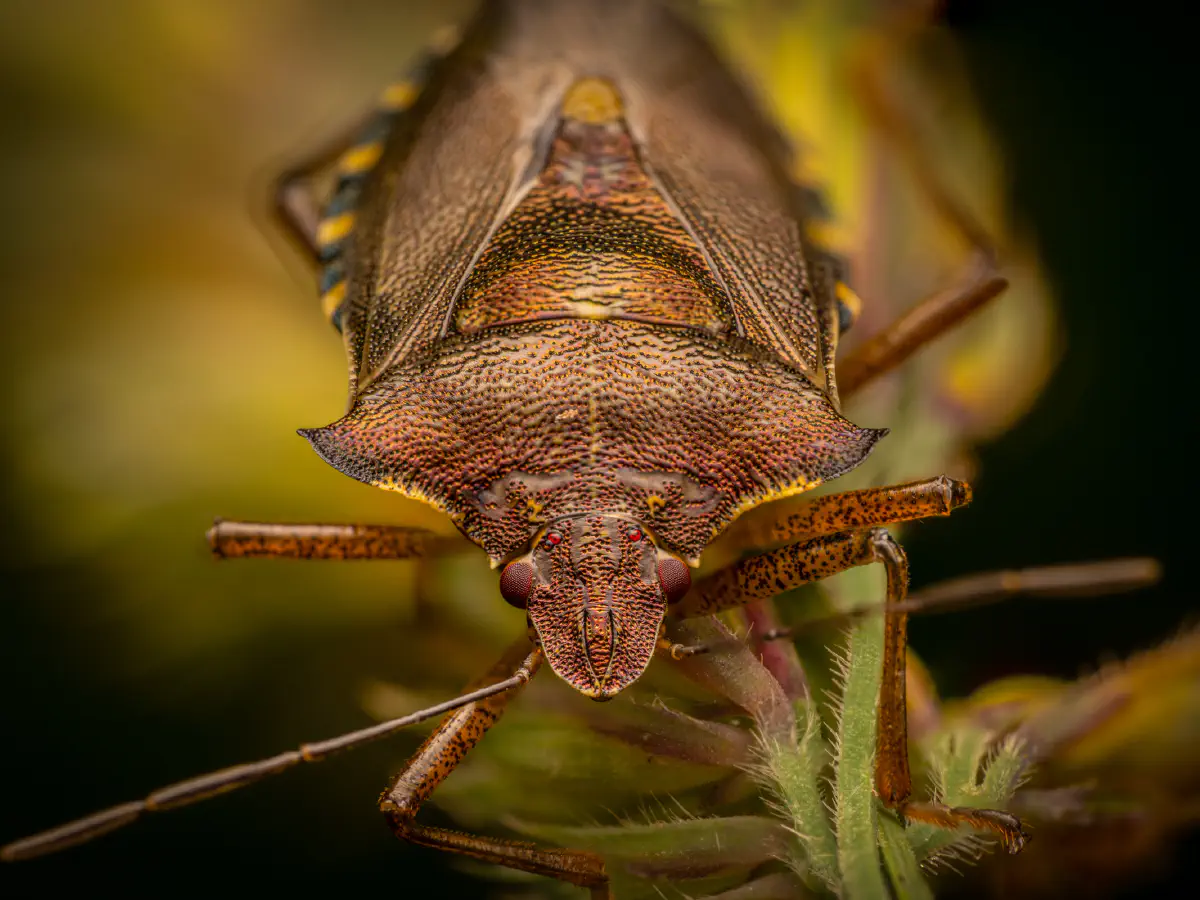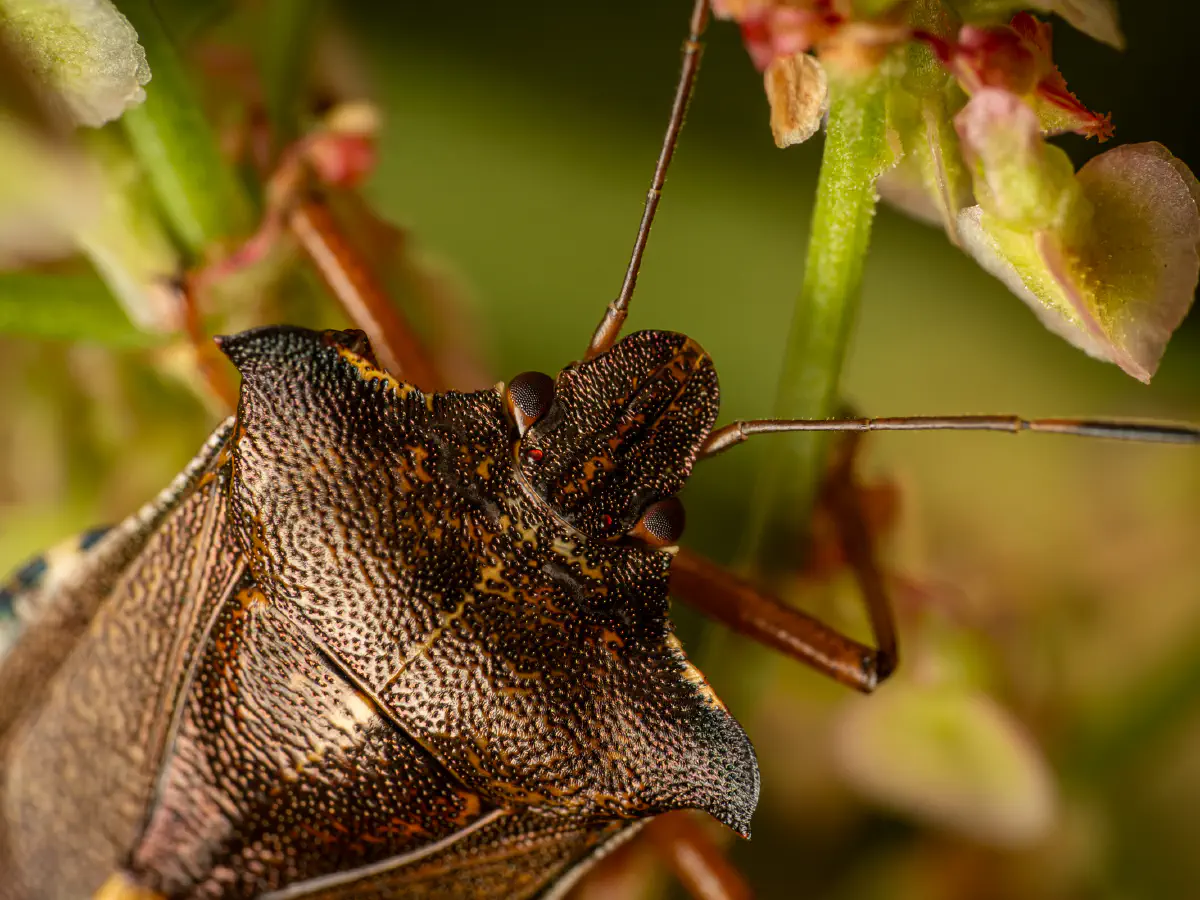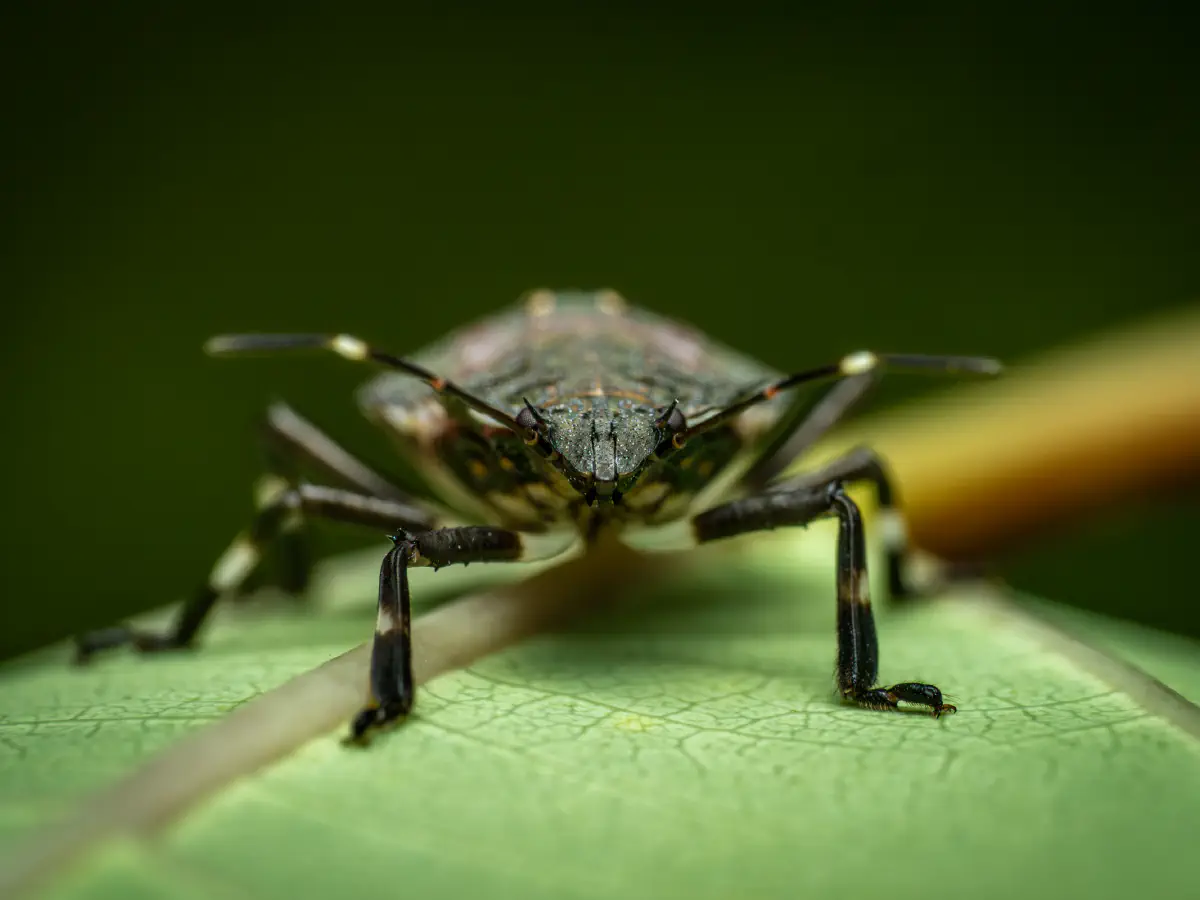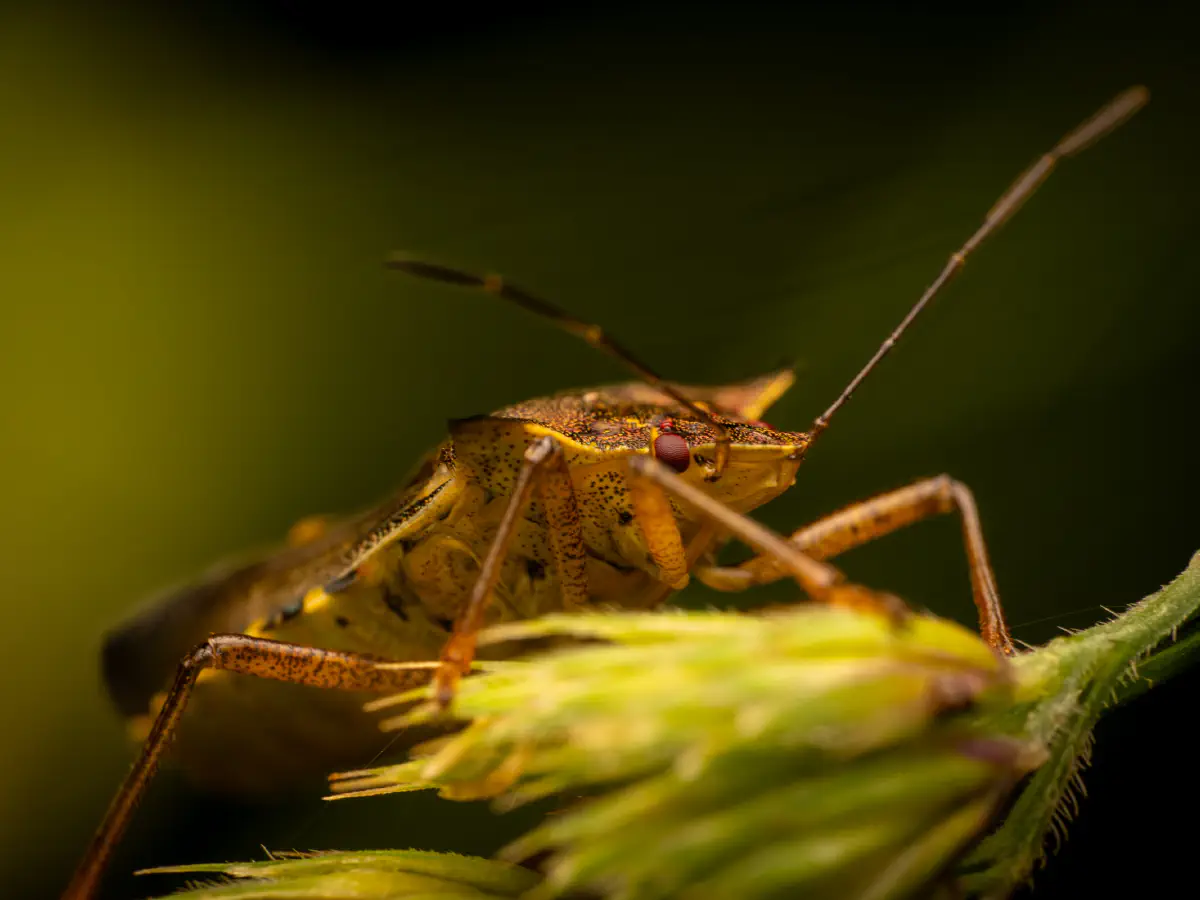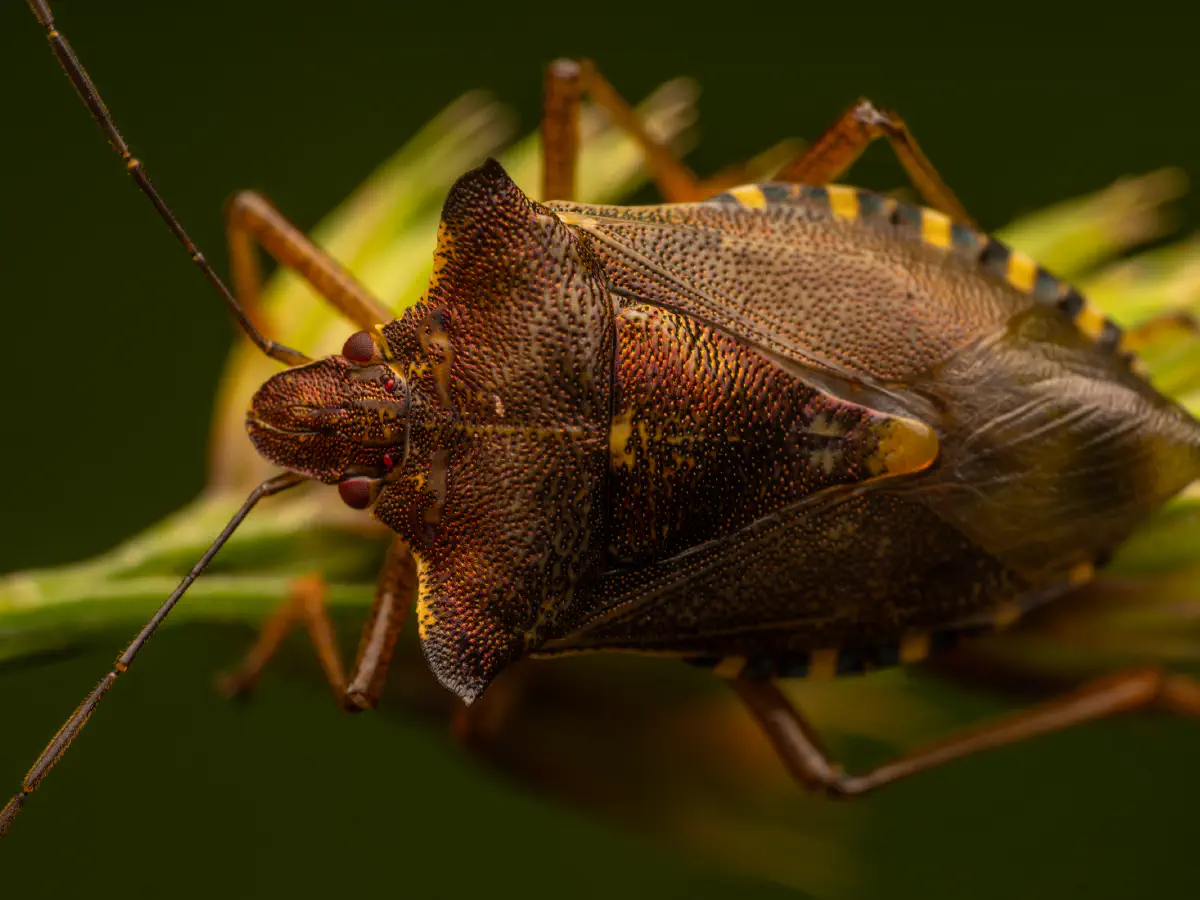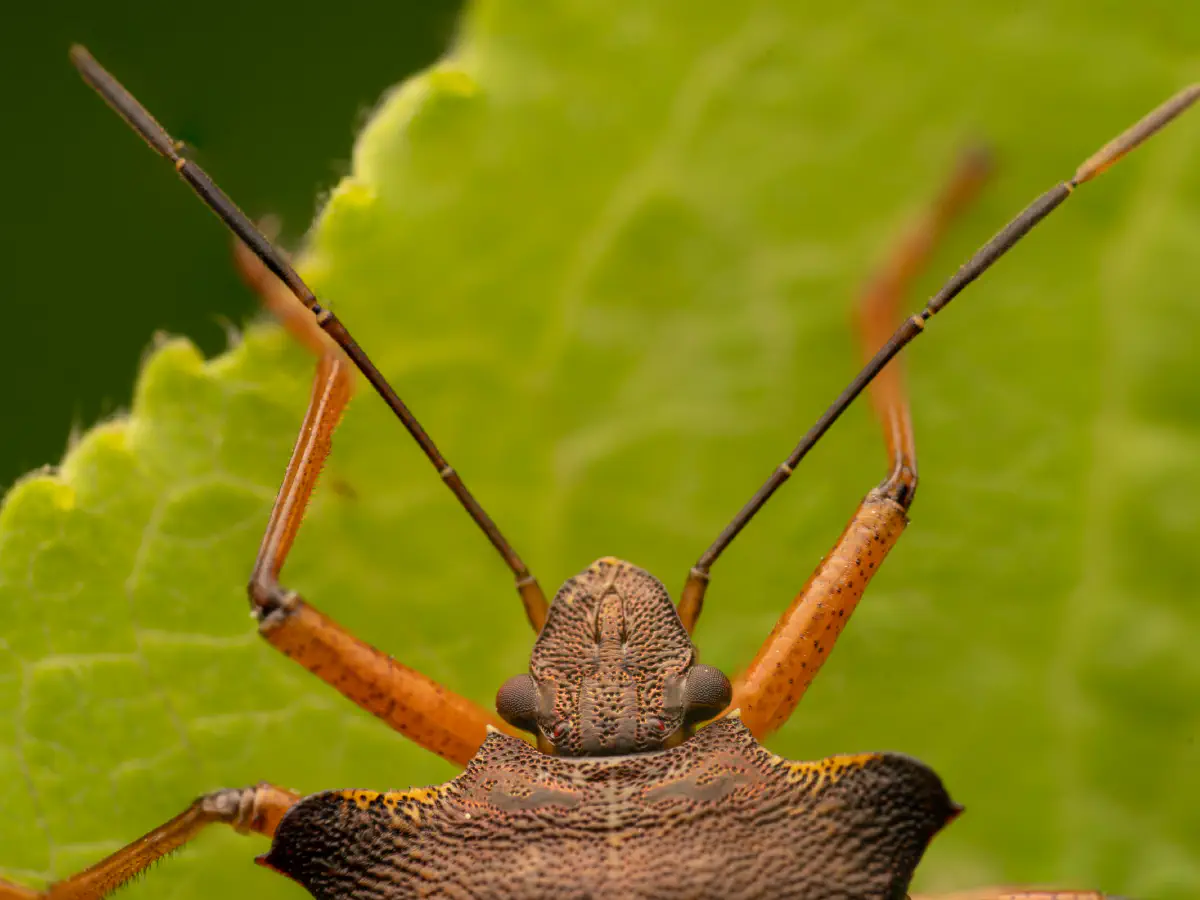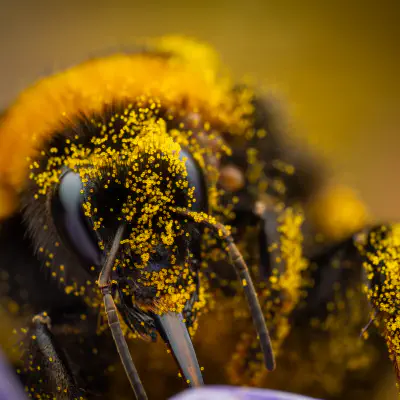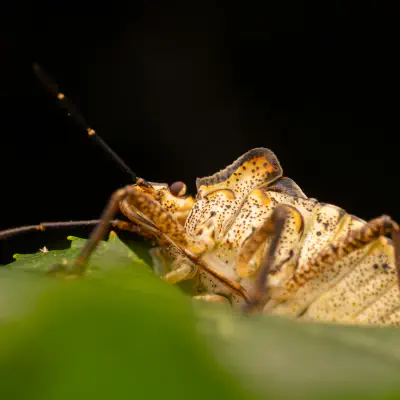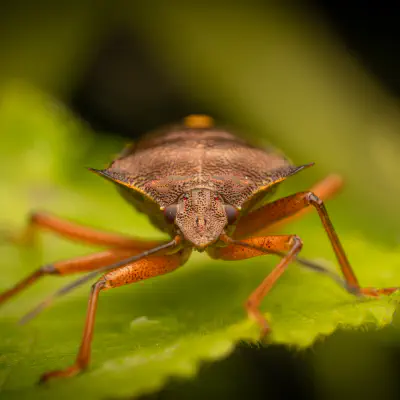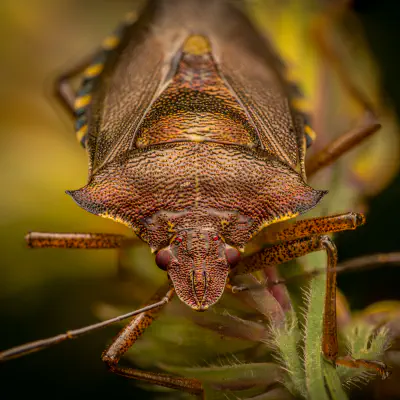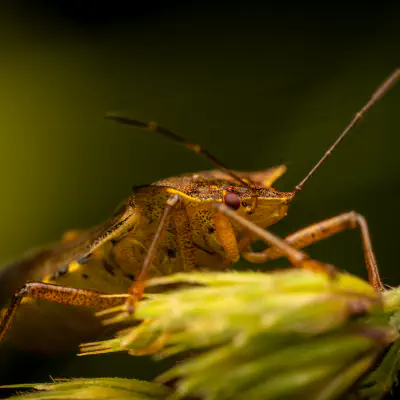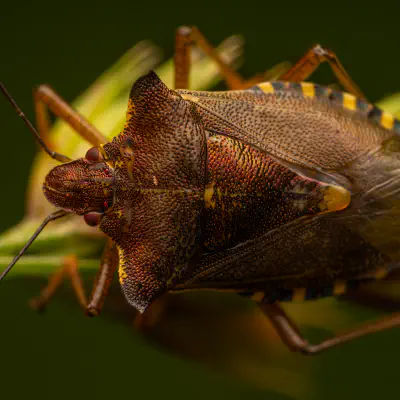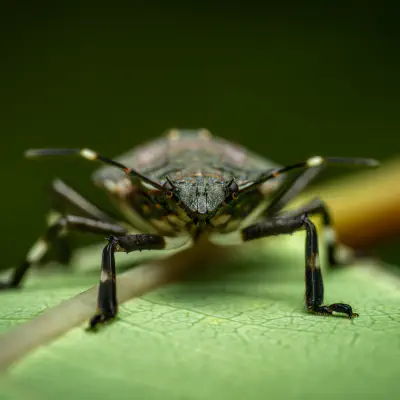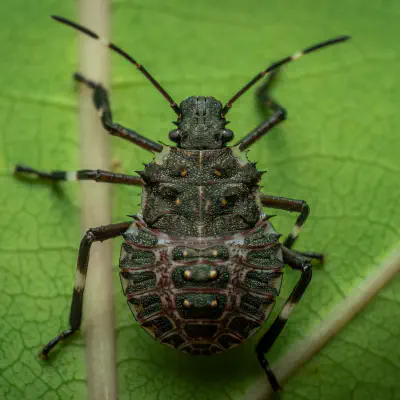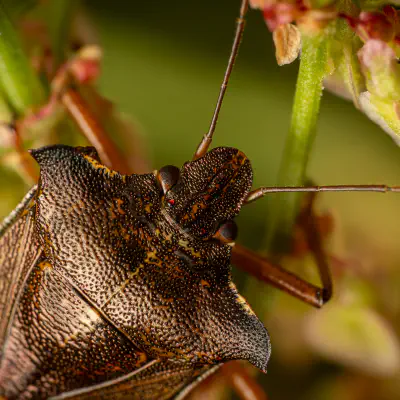P. rufipes can reach a length of 11–14 mm (0.43–0.55 in). These large and flat shield bugs are shaped like an escutcheon-type shield. They have a dark brown body in autumn, lighter in summer, usually bronze-colored. They show red-orange to cream markings at the tip of their scutella. The connexium usually has dark brown, reddish, and light blue bands. The legs and the first segment of the antennae are usually red-brown or bright orange. Its
distinguishing characteristic is a pair of projections extending forward from the shoulders at the front of its dorsal thorax. The larvae are dark, but become lighter, especially at the hind body, with increasing age.
